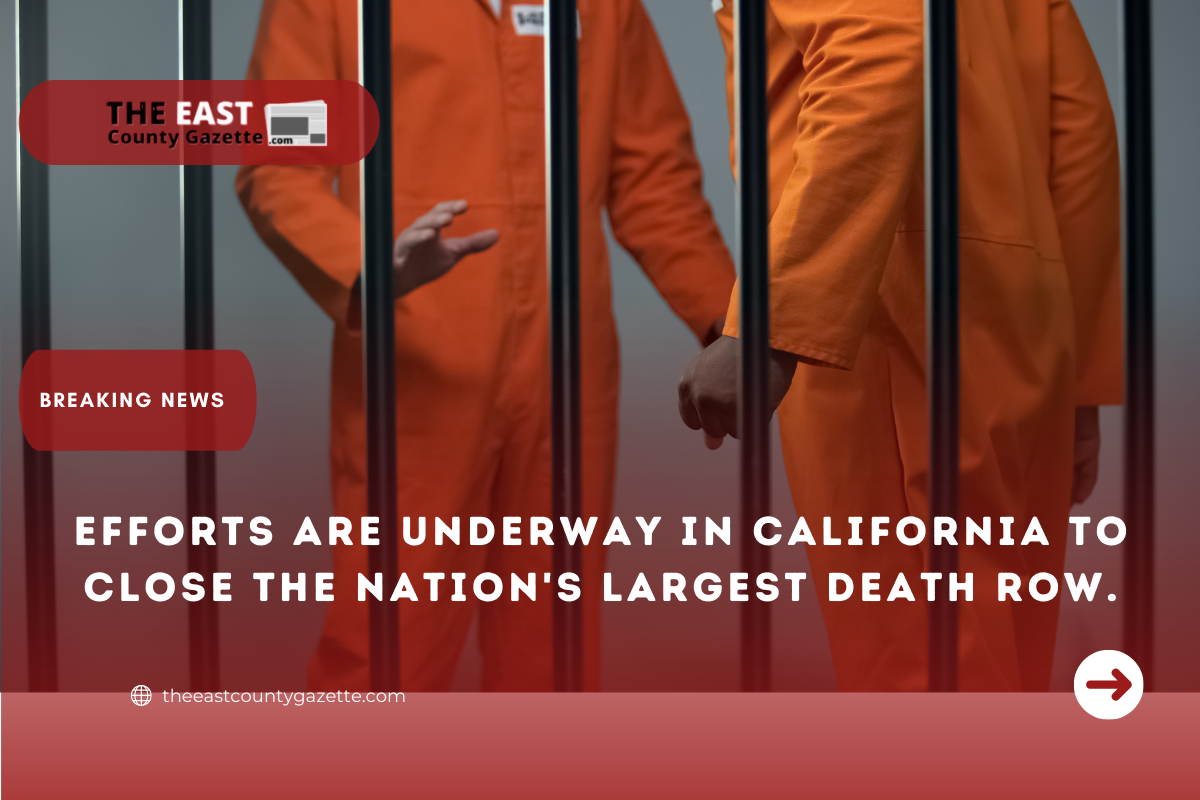Following the implementation of a three-year moratorium on executions in the state of California, Governor Gavin Newsom is now working to deconstruct the nation’s largest death row by transferring condemned inmates to other prisons within two years.
San Quentin State Prison’s death-row section will be transformed into a “positive, healing environment,” and Governor Gavin Newsom said on Monday that the plan is a result of his opposition to what he believes is a deeply flawed system.

According to him, the likelihood of you ending up on death row has more to do with your financial and racial status than with your guilt or innocence. In our country, we talk about justice, we preach about justice, but we don’t put it into practice on death row, as a result.”
Read More: Billionaire George Soros Donates $125 Million to Democrats in the Upcoming Midterm Elections.
It was 2006 when the last execution in California took place. In the meantime, according to the Death Penalty Information Center, it is still one of 28 states, along with the federal government of the United States, that still has inmates on death row.
Following a 17-year hiatus, the United States government carried out 13 executions under former President Donald Trump’s watch. While Attorney General Merrick Garland ordered a moratorium on federal executions, President Joe Biden has promised to put an end to the practice of executing federal inmates.
Although California has no plans to execute any of its condemned inmates in the foreseeable future, the state is integrating them into the general prison population. The state of Oregon did a similar thing two years ago when it moved its much smaller condemned population to other types of inmate housing.
116 of the state’s 673 condemned male inmates were relocated to one of seven other prisons that have maximum security facilities and are surrounded by lethal electrified fences as part of a pilot program that began in January 2020 and is expected to continue until December 2020.
California Department of Corrections and Rehabilitation spokeswoman Vicky Waters said the state is beginning the process of closing death row in order to repurpose and transform the existing housing units into something innovative and anchored in rehabilitation.
The California Department of Corrections and Rehabilitation intends to submit proposed regulations within weeks that would make such transfers mandatory and “allow for the repurposing of all death row housing units,” according to California Attorney General Kamala Harris Waters.
Specifically, Newsom’s initiative runs counter to a 2016 voter-approved resolution that sought to expedite executions in the Golden State.
Michael Rushford, president of the Criminal Justice Legal Foundation (CJLF), said the administration’s underlying motivation was to mainstream as many of these condemned murderers as possible in 2016. The CJLF supported the 2016 initiative. Aiming for a quicker turnaround time was our goal.
He went on to say that he believes victims are dissatisfied with the administration’s choice of course.
According to Rushford, “They’re moving condemned murderers into facilities that will improve their lives and provide them with more amenities, while the victims are still grieving the loss of a loved one.”
Mayor Gavin Newsom claimed that voters approved the move, though he believes that many were unaware of the provision in question. The death penalty was upheld by the Supreme Court, but “they also upheld a responsibility… to actually move that population on death row out of prison and into the workforce,” he explained.
As a result of a ballot measure passed six years ago, condemned inmates were required to work in prison jobs, with 70 percent of their earnings going to victims’ restitution. The transfer program, according to prison officials, is intended to accomplish this goal.
Over $49,000 in restitution had been collected by the end of the pilot program’s first year, according to its results.
Newsom’s proposed budget for the fiscal year beginning July 1 calls for $1.5 million to be allocated to finding new uses for the San Quentin prison’s existing space. Death row and its support activities are located in the same area as facilities that house medium-security inmates undergoing rehabilitation programs.
In order to “develop options for [the] space focused on creating a positive, healing environment in order to provide increased rehabilitative, educational, and health care opportunities,” the public funds would be used to hire a consultant.
There are no plans to “repurpose” San Quentin’s $853,000 execution chamber, which has been sitting in a separate section of the prison since it was built.
However, legislative opponents have stated that they hope to bring the issue back to the ballot in the coming years. In 2012 and 2016, California voters overwhelmingly supported the death penalty.
In November, the Committee on Revision of the Penal Code, an advisory panel to Governor Gavin Newsom and state legislators, recommended that the death penalty be abolished, stating that it was “beyond repair.”
According to the state’s transfer program, condemned inmates who are transferred to other prisons can be housed in solitary or disciplinary confinement if officials determine that they cannot be safely housed with other inmates, despite the fact that they are supposed to be interspersed with other inmates.
Inmates on death row are housed one to a cell, but those who have been transferred can be housed with other inmates if it is deemed safe to do so. “There have been no safety concerns raised, and there have been no major disciplinary issues raised,” Waters stated.
When it comes to jobs and other rehabilitation activities, condemned inmates who are not on death row are treated in the same way as those who are serving life sentences without the possibility of parole.
According to prison officials, this includes working in a variety of jobs such as maintenance and administrative duties among other things.

